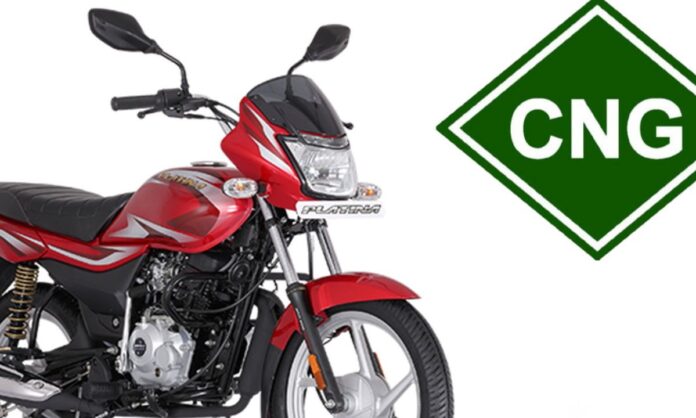With the Chetak, Bajaj Auto established a name for itself in the electric two-wheeler market. In the upcoming years, the company plans to expand its fuel options to include ethanol-blended fuel, compressed natural gas (CNG), and liquefied petroleum gas (LPG) for use in everything from two-wheelers to quadricycles. The goal is to provide reasonably priced, environmentally friendly, and low-maintenance substitutes.
According to information obtained by our sister journal Autocar Professional, the development of a CNG/petrol bike internally designated Bruzer E101 is nearly complete. If everything proceeds according to plan, the bike may be on the road in six months to a year. The first few prototype cars have already been produced, and the 110cc bike will initially be produced at the company’s Aurangabad plant before eventually being produced at its Pant Nagar location as well. For the same, the Platina brand name is being investigated.
Rakesh Sharma, ED of Bajaj Auto, told Autocar Professional that while the firm declined to discuss the specifics of this product, it has acknowledged and internalised the nation’s dual difficulties of lowering import costs and reducing pollution over the past few years. He discussed how Bajaj was a sort of pioneer in converting 3Ws to CNG and LPG, and that the business now commands a 90% market share in the passenger three-wheeler industry thanks to its technological prowess, proactive efforts, and partnership with PSUs.
“We definitely want to expand this capacity to include two-wheelers, but it’s challenging because of variances in size, shape, and use. Our goal is to increase the proportion of “cleaner fuels” in our portfolio, which consists of all EV, ethanol, LPG, and CNG options. We place a great deal of importance on our alignment with the government and society, as you can see from both the 2WS and 3Ws,” Sharma continued.
The original production plan called for producing between one and two lakh CNG motorcycles annually, but this has since been increased to two lakh units and beyond.
Sharma asserted, “The numbers, timelines, brand names, and specs mentioned are way off the mark” in response to concerns about certain products. I am unable to give you relevant specifics for obvious reasons, and they won’t be significant until they are resolved.
A CNG motorcycle might be able to solve the affordability issue that the 100–110cc class is facing, according to Rajiv Bajaj, MD of Bajaj Auto, who recently said to CNBC TV18 in an interview, Bajaj also made a suggestion about lowering GST rates, which would guarantee that entry-level two-wheeler purchasers could afford the ticket price.
Manufacturers such as Maruti Suzuki have already requested that the government reduce the GST rate to 18 percent for CNG vehicles, citing the fact that these vehicles are cleaner, more fuel-efficient, and eliminate the issue of fuel bill imports. Indeed, the central government has already been encouraged to reconsider the GST for the two-wheeler industry, which has not yet reached its prior peak, by the Federation of Automotive Dealers Association, or FADA.
The 100-110cc entry-level two-wheeler category increased at a rate of 5%, which is about half as fast as the double-digit growth of the two-wheeler industry as a whole.Five years ago, the commuter segment accounted for about 45 percent of the two-wheeler category; today, it only makes up roughly a third of the market.
Also Read: Honda CB300R, Launched In 2023 For Rs 2.40 lakh, Has An OBD2 Compliant Engine.






